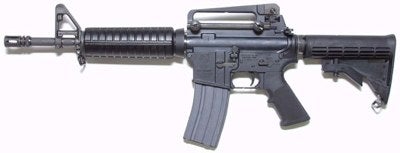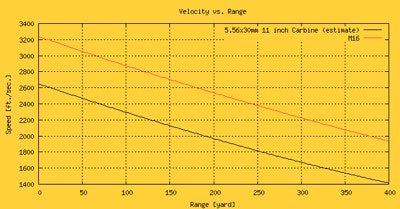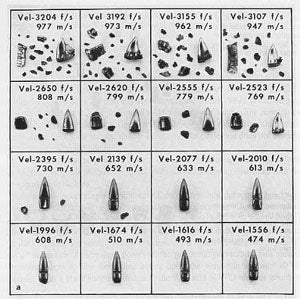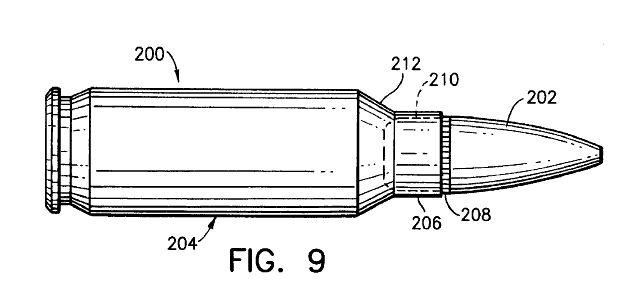During the past few years India’s Armaments Research and Development Establishment (ARDE) have been developing an interesting Personal Defense Weapon (PDW) called the Modern Submachine Carbine (MSMC).
The firearm chambers a round developed in India called the 5.56x30mm. This round is sometimes referred to as the “5.56x30mm INSAS” after the first gun to chambered the round, the INSAS Carbine.
Those of you who follow the industry closely may recall that Colt developed a round named the 5.56x30mm MARS during the 90’s as part of their now defunct Mini Assault Rifle project. I imagine the INSAS cartridge is very similar. The Colt patent describes the MARS cartridge:
The MARS cartridge is designed as part of the weapon system and exploits the high energy densities of modern ball powders. It for the first time uses magnum pistol type powders burned at rifle pressures to achieve high rifle velocities in a short rifle barrel. It uses a fast ball powder to achieve 2600 ft/sec with a 55 gr full metal jacket projectile in only an 11 inch barrel.
The MARS cartridge/rifle was able to achieve similar ballistics as a ultra-short barreled 5.56x45mm NATO rifle (I use the term rifle loosely, sub-carbine is more correct), but with less muzzle flash, noise and weight. The Indians went with the 5.56x30mm over the 5.56x45mm for these exact same reasons as Colt.
Out of a 11″ barrel, the MARS Rifle was able to push a 55 grain bullet at 2600 fps, generating 825 ft/lbs of muzzle energy. For comparison, according to Wikipedia, the original Colt Commando (11″ barreled sub-carbine) could push a bullet (presumably a 55 grain M193 Ball) at 2750 fps.

Colt M4 Commando (current model)
While the 5.56x30mm has advantages over a pistol cartridge such as the 9mm NATO, to wit, less weight and kevlar vest penetration, it has in my opinion one fatal flaw. 5.56mm bullets were never designed to operate at such low velocities. While 2650 fp/s may seem fast, that is at the muzzle, not 200 meters downrange where the target is situated.

A graph I generated. Numbers are estimates for illustration only.
Col. Martin L. Fackler, MD famously did a study which determined that a 5.56mm bullet (M193 and M855) would fragment only slightly ,or not at all, when hitting flesh below the speed of 2500 fps. Low fragmentation results in a .22″ sized hole in the target – less damaging that a .38″ (9mm) or .45″ hole.

Col. Martin L. Fackler, MD results
It will be interesting to see how this new sub-carbine and perform in real life, and what official nickname the cartridge is given. I think 5.56mm India or 5.56mm Short should are much better named than 5.56x30mm INSAS.
Hat Tip: 8-AK Defense News and Ammoland
Tag: 5.56×30
 Your Privacy Choices
Your Privacy Choices

